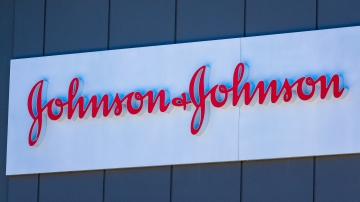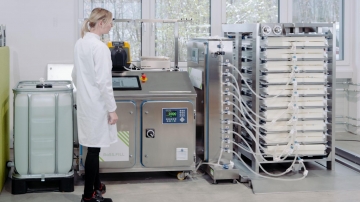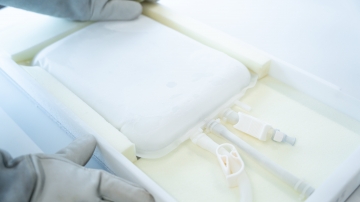Trends in monoclonal antibody production: Optimizing processes with single-use technology
Table of contents
ShowMonoclonal antibody production is shaped by changing trends and continuous scientific progress. The increasing need for high-quality mAbs for more and more applications require manufacturers to permanently improve production processes. However, it might be difficult to determine which developments come and go without a significant impact, and which trends are actually going to make a lasting difference.
In this article, we will highlight some hot trends in monoclonal antibody production that we believe are to be watched out for in the future, as they describe promising approaches to bring the mAb production process several steps further.
What drives the monoclonal antibody market?
The monoclonal antibody market anticipates a robust Compound Annual Growth Rate (CAGR) exceeding 11% from 2023 to 2030, indicative of its pivotal role in the pharmaceutical landscape. Bolstered by a substantial global market volume of $210.06 billion USD in 2022, mAbs are expected to keep playing a major role in research, diagnostics, and therapeutics.1
This growth is fueled by an escalating need for larger quantities of monoclonal antibodies, due to their expanding applications across diverse medical domains. As the industry shifts towards personalized therapies for more effective and individualized treatments, mAbs play a crucial role in meeting these emerging needs.
For instance, novel approaches in cancer immunotherapy leverage the precision of mAbs to enhance the body's immune response against cancer cells. Additionally, the development of mAb-based treatments for autoimmune diseases, like rheumatoid arthritis and psoriasis, showcases the huge potential of these antibodies.1 2
Trends that re-shape mAb production
The landscape of monoclonal antibody (mAb) production is undergoing transformative shifts, driven by strategic trends that redefine industry standards and optimize operational processes.
Less in vivo, more in vitro
The move from in vivo to in vitro methodologies in monoclonal antibody production is motivated by ethical considerations and practical benefits. On a practical level, adopting in vitro methodologies allows for enhanced control over crucial production variables such as temperature, pH, and nutrient concentrations, ensuring a more reproducible and standardized manufacturing process.
However, it's worth noting that the transition to in vitro production has often encountered challenges related to scaling up monoclonal antibody manufacturing. Innovative approaches are required to address these challenges in mAb production and ensure a seamless and efficient production process.3
High-performance cell lines
The increasing need for larger volumes of monoclonal antibodies has led to a shift towards high-performance cell lines that can express high-quality mAbs at scale. Chinese Hamster Ovary (CHO) are one of these cell types, widely acknowledged for their proficiency in producing complex proteins with human-like modifications. Rigorously engineered, CHO cells not only enhance productivity but also play a pivotal role in optimizing mAb yields, a critical factor in meeting the escalating demand for these therapeutic agents.
Another prominent player in mAb production is the NS0 cell line, a mouse myeloma cell line lauded for its efficiency in generating antibodies. Employed extensively, NS0 cells have been modified to enhance productivity, contributing significantly to streamlined and efficient production processes.4 5
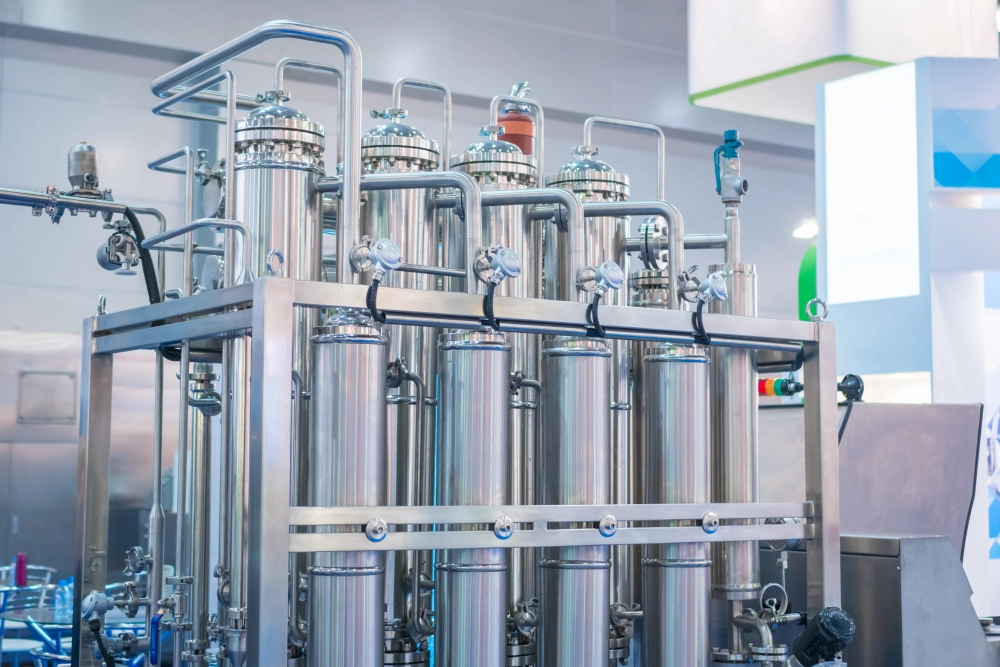
Culture systems for high cell density
A notable trend in monoclonal antibody production involves the adoption of advanced culture systems designed for achieving high cell density. For this purpose, innovative bioreactors, including hollow fiber bioreactors, wave bioreactors, and cryogel bioreactors, are considered viable options:
- Hollow fiber bioreactors: With large surfaces for cells for adhesion, these bioreactors create an environment conducive to high-density cell growth during mAb production.
- Wave bioreactors: Employing a rocking motion, wave bioreactors enhance nutrient distribution and oxygenation, fostering optimal conditions for achieving high cell density in mAb cultures.
- Cryogel bioreactors: Leveraging gel matrices, cryogel bioreactors create a three-dimensional environment that supports high-density cell cultures.
Source: National Center for Biotechnology Information6
Conjugation of mAbs – ADCs are on the rise
In addition to the use of naked antibodies, mAbs open new therapeutic possibilities through strategic conjugation with small-molecule drugs. The rationale behind mAb conjugation lies in the desire to synergize the high specificity of antibodies with the potent therapeutic payloads of small molecules.
Therapeutics like antibody-drug conjugates (ADCs) allow for a targeted and nuanced approach to diseases, particularly in oncology. By profiting from the precision of mAbs and the cytotoxic potential of drugs, this conjugation strategy addresses challenges associated with conventional treatments, offering heightened efficacy with minimized collateral damage.
Automated, closed processes
A groundbreaking trend in monoclonal antibody production revolves around the adoption of automated, closed processes. This marks a strategic departure from traditional methods, introducing a paradigm shift that prioritizes efficiency, precision, and quality control.
Automated processes in mAb production involve the integration of robotics and advanced technology to streamline various stages, from cell culture to purification, from fluid transfer to cold chain management. This not only significantly reduces the risk of contamination but also enhances reproducibility and scalability. The closed system approach, on the other hand, minimizes exposure to external contaminants, ensuring a controlled and sterile environment throughout the production cycle.
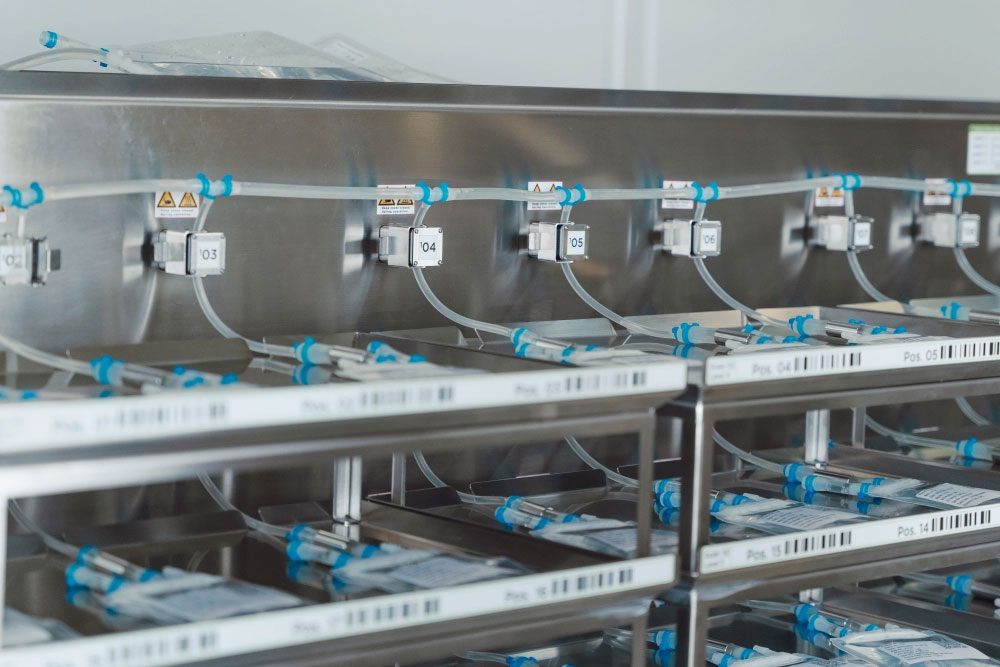
Sustainability in mAb manufacturing
Sustainability is a major concern in biopharmaceutical manufacturing, requiring measures to keep the environmental impact of processes like mAb production as little as possible. Water and energy consumption as well as the use of chemicals are therefore to be optimized, along with waste management.
Monoclonal antibody manufacturers can make various significant changes in their production processes. While some affect only distinctive steps in the mAb production process – such as a reduced number of chromatography cycles to minimize water consumption –, others impact the entire supply chain.6
For instance, processes, systems and consumables with a minimized need for elaborate in-house cleaning can be opted for, in order to reduce resource consumption and thus the environmental impact of monoclonal antibody production. To this end, several manufacturers adopt single-use technologies in their processes.7
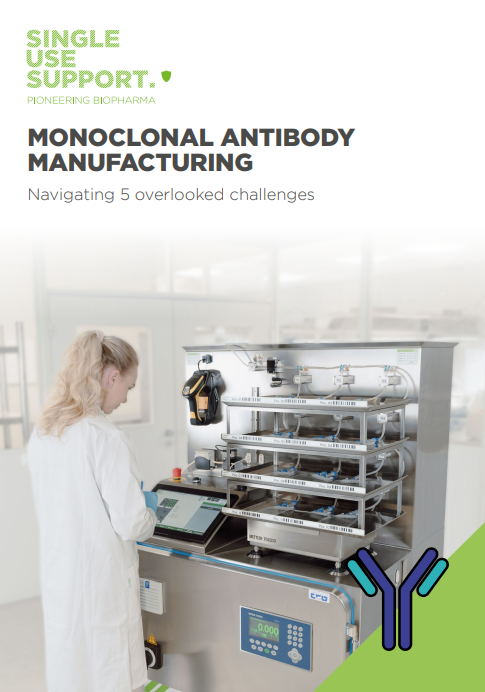
Download Guide
Navigating 5 Overlooked Challenges in Monoclonal Antibody Manufacturing
Ready for tomorrow – single-use technologies in mAb production
This is not listed among the latest trends – simply because the development has been going on for years now. However, the ever-increasing implementation of single-use technologies in monoclonal antibody production makes a considerable contribution to recent advances and achievements.
In the pharmaceutical industry, single-use technologies are praised for their ease of use as well as the increased level of flexibility, scalability, and sustainability. Suppliers like Single Use Support have therefore put great effort in the development of end-to-end processes based on SUT.
In the product line-up of Single Use Support, biopharmaceutical manufacturers can find systems to implement automated, closed and safe production lines that cover both upstream and downstream processes. RoSS.FILL, a platform for automated fluid management – can perform different volumes of biologics under aseptic conditions, with high throughput and precision.
Being filled into single-use bioprocess containers and covered by protective shields like RoSS® Shell, monoclonal antibody products are ready to be frozen and either prepared for mAb storage or shipping. To allow this, Single Use Support has developed a plate freezing platform that is able to achieve controlled freezing and thawing rates, aiming to ideally cater to the biologics’ characteristics and requirements.
End-to-end fluid management processes, scalable production, and sustainability – these major trends in monoclonal antibody production are reflected in Single Use Support’s solutions for monoclonal antibody manufacturing. By adopting single-use technologies in mAb production, manufacturers can get themselves ready for the future.
- The pharmacology and therapeutic applications of monoclonal antibodies, http://dx.doi.org/10.1002/prp2.535, Published 2019-12-20
- Monoclonal Antibodies Market Size, Share & Trends Analysis Report By Source Type (Chimeric, Murine, Humanized, Human), By Production Type (In Vivo, In Vitro), By Application, By End-use, By Region, And Segment Forecasts, 2023 - 2030, https://www.grandviewresearch.com/industry-analysis/monoclonal-antibodies-market, Published
- Trends in Monoclonal Antibody Production Using Various Bioreactor Syst, http://dx.doi.org/10.4014/jmb.1911.11066, Published 2020-07-02
- Cell culture processes for monoclonal antibody production, http://dx.doi.org/10.4161/mabs.2.5.12720, Published 2010-10-01
- CHO cells – 7 facts about the cell line derived from the ovary of the Chinese hamster, https://www.evitria.com/journal/cho-cells/cho-cells/, Published 03.05.2022
- Trends in Monoclonal Antibody Production Using Various Bioreactor Syst, http://dx.doi.org/10.4014/jmb.1911.11066, Published 2020-07-02
- What's The Environmental Impact Of Biopharma Continuous Manufacturing? Part I, https://www.biosimilardevelopment.com/doc/what-s-the-environmental-impact-of-biopharma-continuous-manufacturing-part-i-0001, Published 2022






